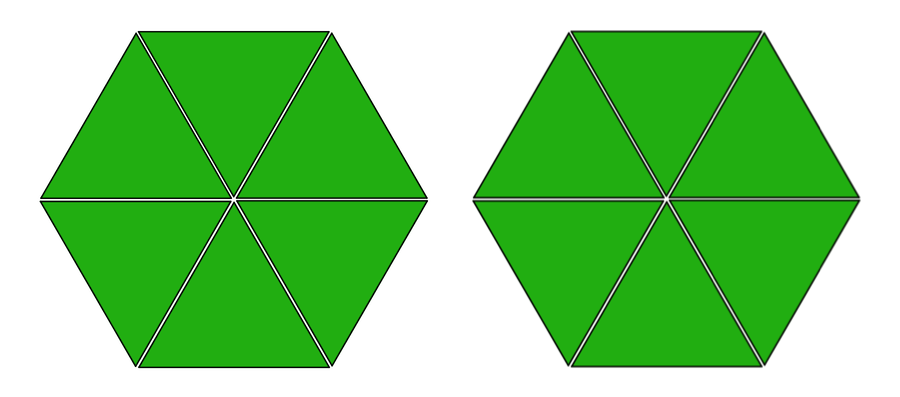4.1: Equal-sized Groups
Write a multiplication equation and a division equation for each statement or diagram.
- Eight $5 bills are worth $40.
- There are 9 thirds in 3 ones.
Let’s play with blocks and diagrams to think about division with fractions.
Write a multiplication equation and a division equation for each statement or diagram.

Use the pattern blocks in the applet to answer the questions. (If you need help aligning the pieces, you can turn on the grid.)
Here are Elena’s diagrams for 2 \boldcdot \frac12 = 1 and 6 \boldcdot \frac13 = 2. Do you think these diagrams represent the equations? Explain or show your reasoning.

3 \boldcdot \frac 16=\frac12
How many \frac 12s are in 4?
How many \frac23s are in 2?
How many \frac16s are in 1\frac12?
Some problems that involve equal-sized groups also involve fractions. Here is an example: “How many \frac16 are in 2?” We can express this question with multiplication and division equations. {?} \boldcdot \frac16 = 2 2 \div \frac16 = {?}
Pattern-block diagrams can help us make sense of such problems. Here is a set of pattern blocks.

If the hexagon represents 1 whole, then a triangle must represent \frac16, because 6 triangles make 1 hexagon. We can use the triangle to represent the \frac 16 in the problem.

Twelve triangles make 2 hexagons, which means there are 12 groups of \frac16 in 2.
If we write the 12 in the place of the “?” in the original equations, we have: 12 \boldcdot \frac16 = 2
2 \div \frac16 = 12